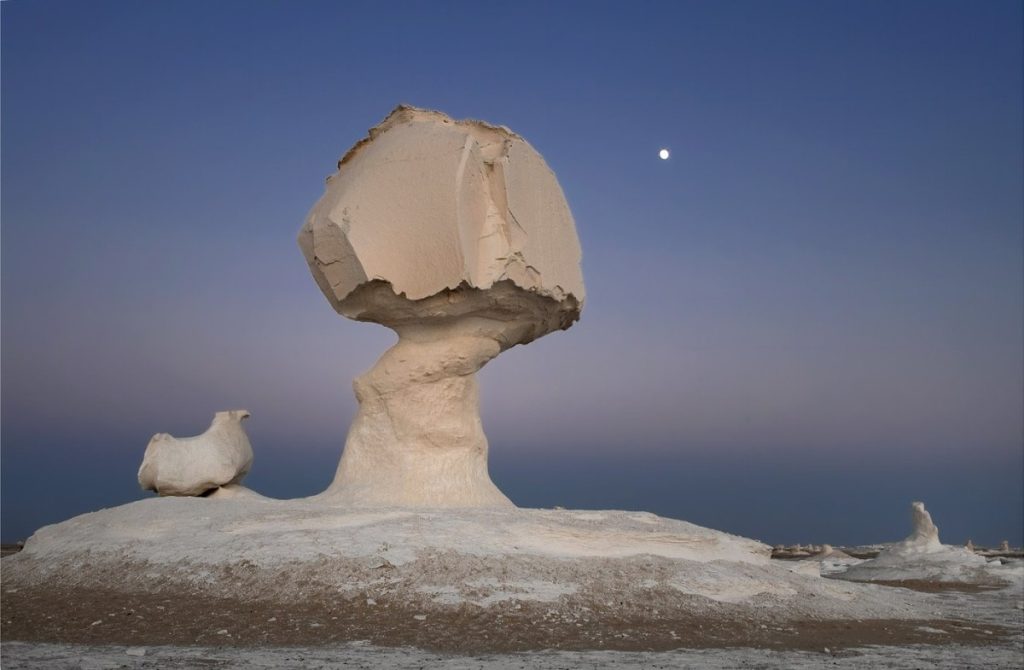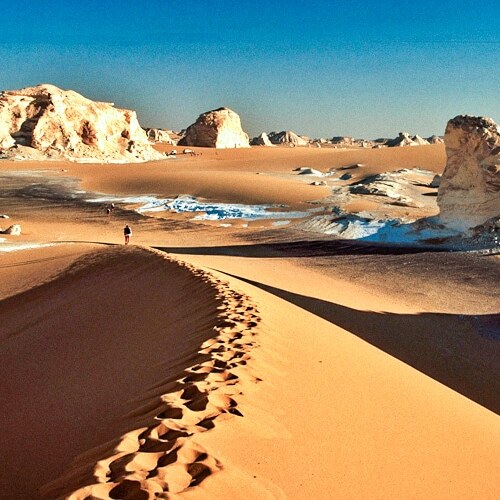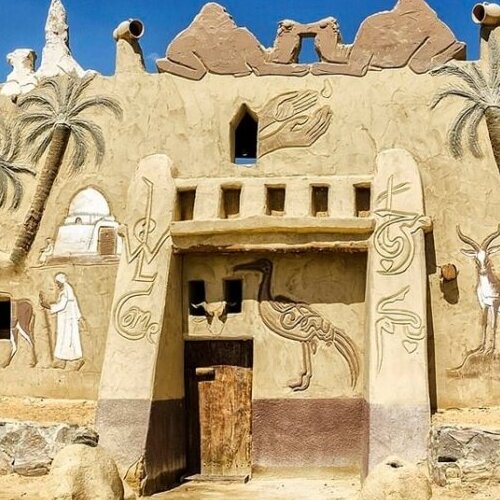No other nation in the world says ‘Welcome’ as often as the Egyptians, and every time, they mean it. While the ancient civilization of Egypt continues to amaze, contemporary Egyptians are equally remarkable.
White Desert National Park
The White Desert National Park
In the vast expanse of Egypt’s Western Desert lies a marvel of nature, the White Desert National Park. Covering 3,010 square kilometers on either side of the highway, this park proudly stands as Egypt’s first national park, established in 2002. It was created with a visionary purpose: to safeguard the area’s unique landscape from the impacts of excessive tourism. In its early days, stringent measures, including heavy fines for littering and restrictions on jeep movement to designated tracks, were introduced. These regulations aimed to reshape the practices of safari companies more interested in profit than preservation.

Challenges and Resilience
The park’s journey, however, has not been without challenges. The 2011 Revolution saw the destruction of the ticket office and a lapse in the payment of park wardens, leading to a temporary breakdown in enforcement. During this period, compliance with entry fees and camping regulations became sporadic, hinging on the occasional encounter with one of the few active park wardens. Despite these setbacks, the park has demonstrated remarkable resilience, continuing to be a beacon of natural beauty and conservation.
A Geological and Biological Wonderland
The White Desert National Park is a symphony of natural phenomena. Here, large formations of white chalk rock, sculpted by the relentless forces of wind and sand, create an otherworldly landscape. The park is also home to the majestic cliffs at the northern end of the Farafra Depression, the undulating sand dunes that form part of the Great Sand Sea, and the serene oases of Ain El Maqfi and Ain El Wadi.
Varied Elevations and Rich Biodiversity
Geographically, the park spans from the highest point at El Qess Abu Said, rising 353 meters above sea level, to the lowest at Wadi Hennis, sitting at 32 meters. This varied topography provides a refuge for a diverse range of wildlife. The park is a sanctuary for the endangered Rhim gazelle and the vulnerable Dorcas gazelle, alongside other species like the Barbary sheep, jackals, Rüppell’s, Red, and Fennec foxes, as well as the elusive Sand cats.
Created On March 18, 2020
Updated On July 22 , 2025
FARAFRA Travel Guide



